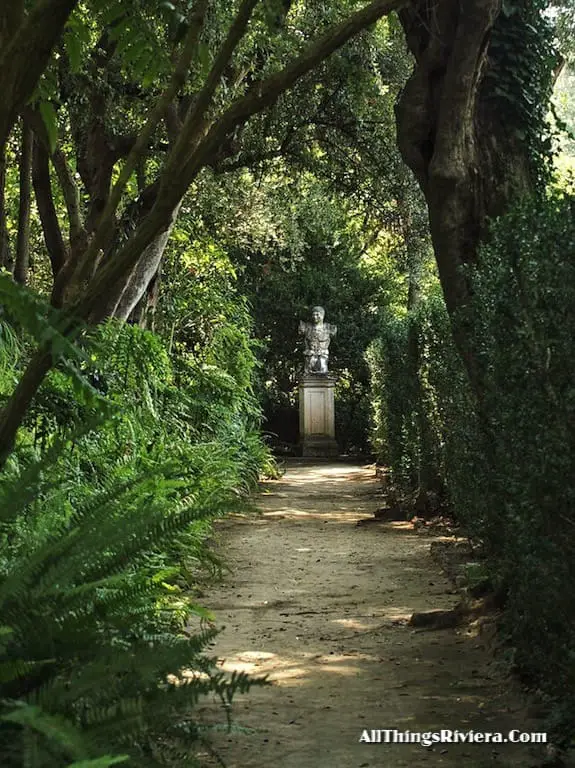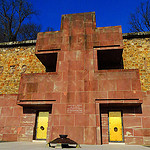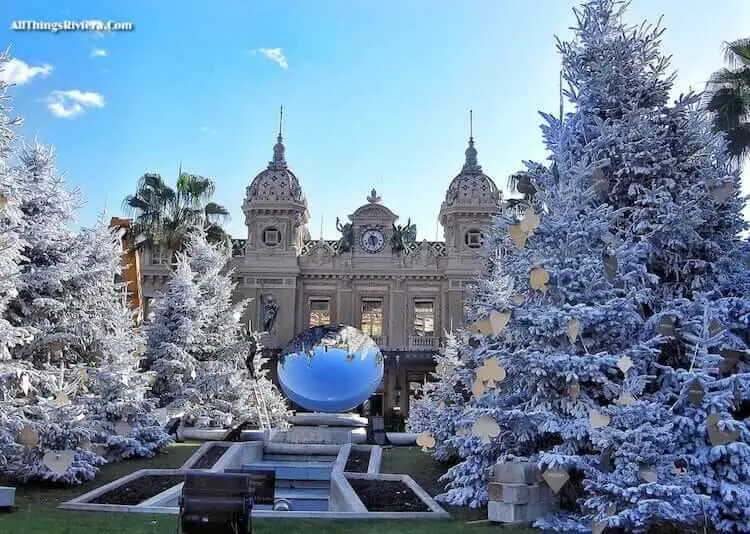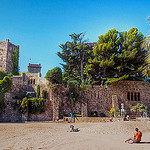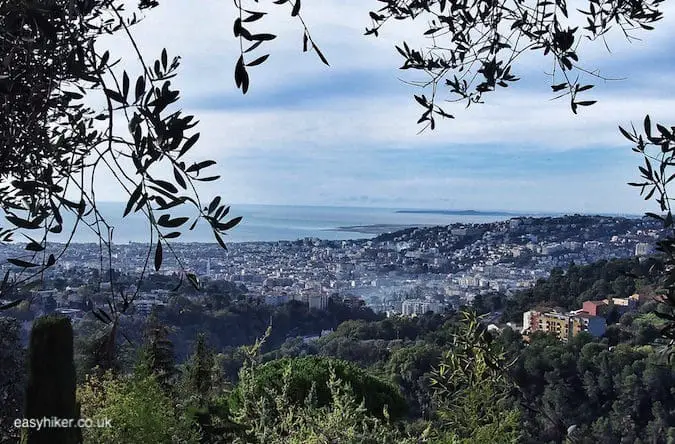Gardens are to nature what fictional stories are to real life. They are carefully plotted, laid out to amuse and to entertain, and they do not try to conceal that everything you see has been put there for a reason. They are highly artificial, but holding that against them is like going to the theatre and complaining that everything was, well, a bit stagey.
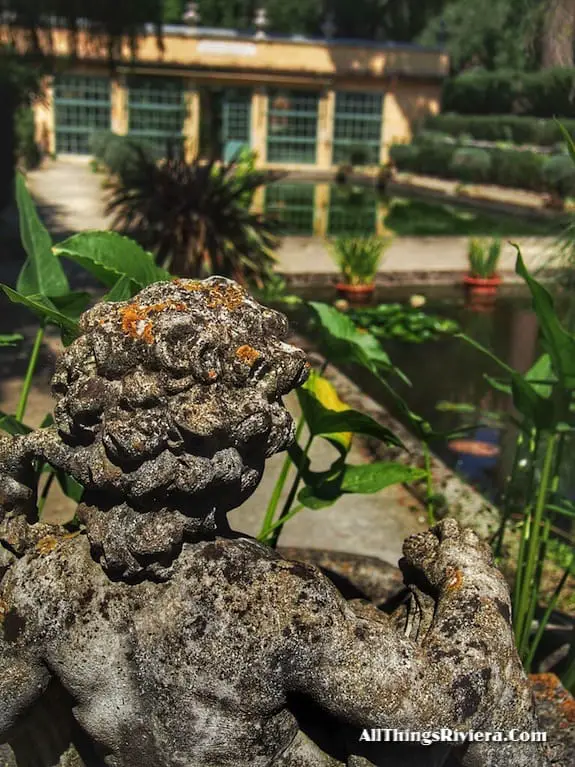
This does not mean that all gardens are the same. There are different gardens as much as there are different types of fiction.
Among the Riviera gardens, the Giardini Hanbury are the epic – vast in scope and in scale, immensely rich in texture, with plots and subplots that have a logic all of their own.
Monaco’s Jardin Exotique works like a thriller: it establishes its theme pretty soon (cacti on a cliff, largely), but just when you think you know what will be coming next, a view of skyscapers and the deep blues of the Mediterranean opens up around the next corner which is so breathtaking that you will feel as though somebody had pulled the ground away from under your feet.
The Val Rahmeh is as other-worldly as a piece of magical realism, while visiting the Fontana Rosa feels like seeing the first work of a talented auteur: overall unfinished but with exquisite details.
And then there is the Serre de la Madone Garden
Gardens, like all works of art, are defined as much by what is there as by what they leave out. The Serre de la Madone garden leaves not much out: every inch is covered by something, and the overall impression can be quite overwhelming. It’s certainly the most jungly of the Riviera gardens.
In certain sections, you can hardly see the daylight between the bushes, trees and thickets….
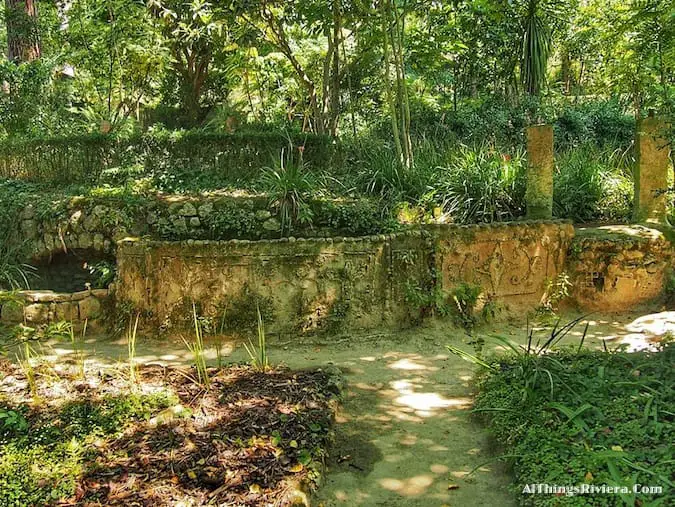
… although, to be fair, there are also airier, lighter sections …
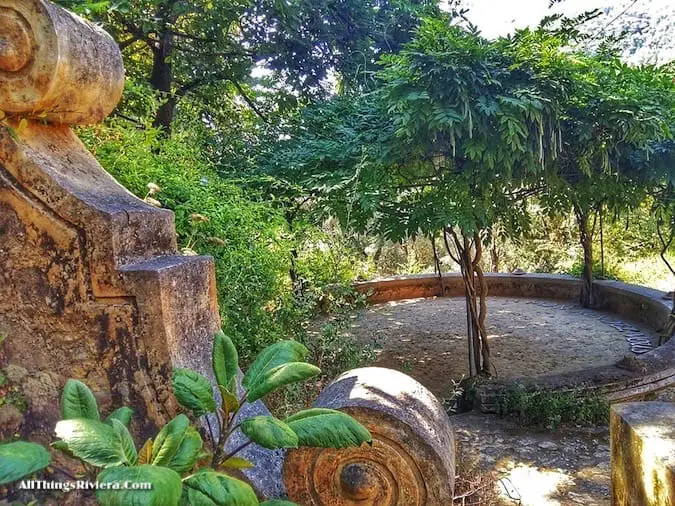
… and plenty of playful moments.
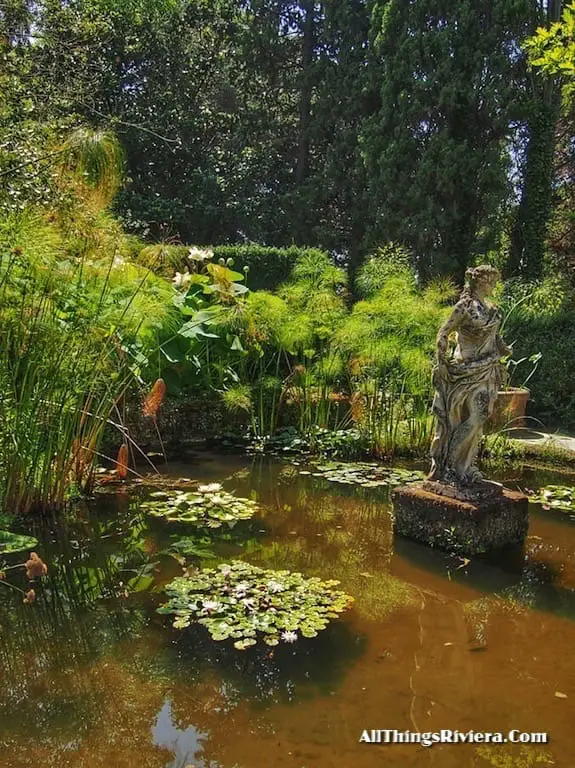
Like nearly all Riviera gardens, the Serre de la Madone garden was the work of a mildly eccentric expat. Lawrence Johnston was born in Paris (in 1871), the scion of a wealthy American family from Baltimore, but he went on to spend nearly all of his life in the UK and in southern France.
He is commonly referred to as a “landscape designer”, but he relates to workaday professionals like Capability Brown in much the same way that Prince Charles can be compared to Peter Paul Rubens: Johnston was, like the Prince of Wales, an undoubtedly talented amateur in his chosen field, but he also held down a day job which is not too harshly described as being “his mother’s son”.
Mrs. Johnston, by all accounts a formidable lady, had bought her son a Mediterranean plantation because she wanted him to live the life of a gentleman farmer. This was not quite Lawrence’s thing, however, and he soon abandoned farming in favour of gardening, to Mummy’s great disappointment. Mrs. Johnston never had anything but scorn for her son’s passionate interest in flowers.
At the time when the Johnstons acquired it, the Serre de la Madone was a 9-hectare working farm, comprising terraces of wine and olives, but all that soon made way for tropical plants. Johnston acquired the garden in his middle age, and the older he got, the more time he spent here, turning the old farm house on top of the slope …
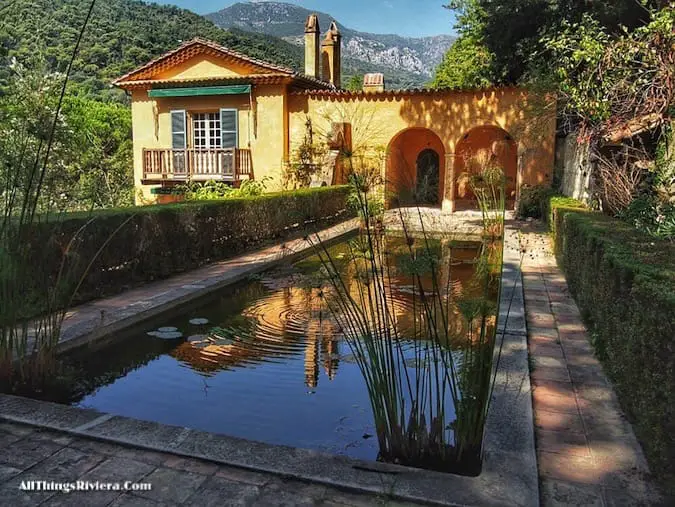
… into an increasingly opulent and enchanted residence …
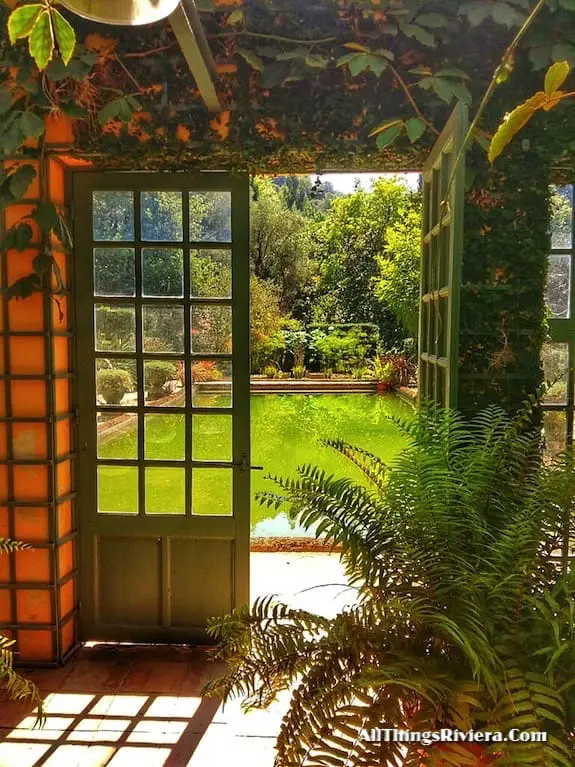
… adding extra features such as greenhouses and outbuildings.
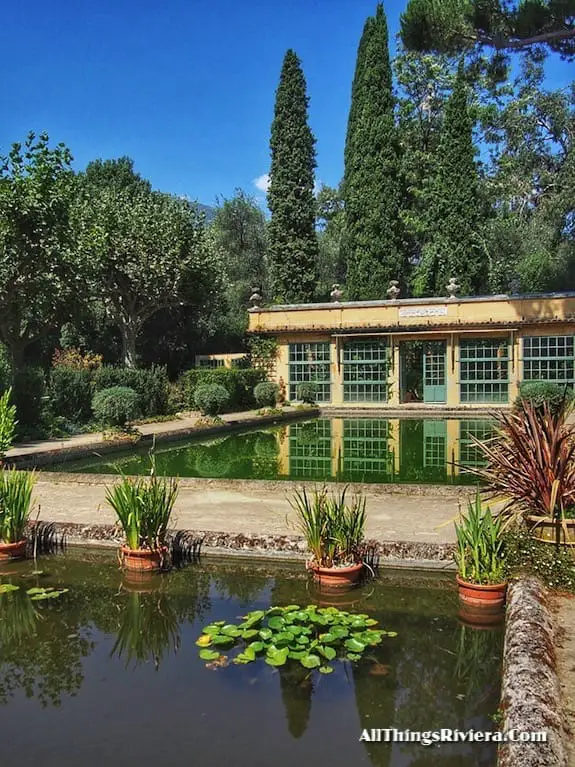
Johnston died in 1958, leaving no apparent heirs (he never married), and the Serre fell into neglect for years until it finally went into public ownership.
The ongoing restoration programme is not helped by the fact that Johnston left behind few written records or plans. He was, by all accounts, a sweet man and a gentle soul, insufficiently self-obsessed to have penned a gardening manifesto or even extended notes. And since he was also painfully shy and had only a few close friends, there are virtually no letters either.
In his entire life, Johnston only designed two gardens: the Serre and Hidcote Manor in the UK. Until 1930, when he was already 60 years old, he was unknown even in the small world of landscape gardening. Only family friends had ever seen his gardens, but then, word got around somehow, and the magazine Country Life published an article about Hidcote.
It is not hyperbole to add that the rest is history. If you are not into gardening, the name Lawrence Johnston may not mean much to you, but Hidcote – more even than the Serre de la Madone – is well and truly world-famous, the first property to be taken over by the National Trust on the strength of the garden alone (in 1948) and a Grade I listed monument of “exceptional national interest”.
To visit the Serre de la Madone, take bus no 7 from Menton town centre in the direction of Parc Azur. There is a station called Serre de la Madone from where the entrance to the garden is literally around the corner. But be careful: it is closed on Mondays and throughout the months of November and December. The entrance fee is € 8 per person.
